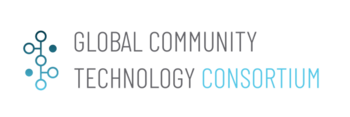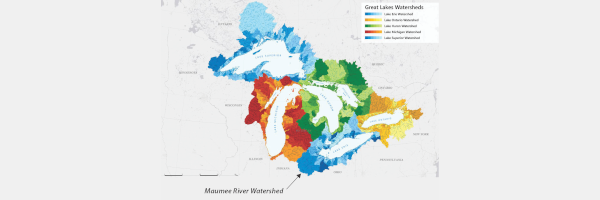The Great Lakes Smart and Sustainable Cities Cluster
| The Great Lakes Smart and Sustainable Cities Cluster | |
|---|---|

| |
 Great Lakes Region Sustainability | |
| Team Organizations | Hatch Ltd. Ohio State University Artha.zone Council of Great Lakes Region |
| Team Leaders | Paul Carlson |
| Participating Municipalities | Defiance OH Defiance OH Hudson OH |
| Status | Launched |
| Document | None |
Description
The Council of Great Lakes Region (CGLR) Regional Action Cluster will address the United Nations’ seventeen Sustainability Development Goals (SDGs) by consistently measuring sustainability at the neighborhood, city, state/provincial and regional levels. The cluster will also develop a framework to measure human well-being and ecosystem services by identifying bottom-up citizen co-creation actions taken across institutional boundaries. Open Action dashboards will display progress and link to knowledge achieving stated goals and objectives around the SDGs.
Challenges
Achieving ‘sustainability’ where it most counts, at the sub-national level and in our cities, remains a significant challenge, especially in economies such as Canada and the United States and in cross-border regions like the bi-national Great Lakes, which is home to 107 million people and accounts for 30% of combined Canadian and American economic activity and employment.
Solutions
As human population increases and more people migrate to cities (some aspiring to be ‘smart’), facilitating sustainability through citizen co-design and co-creation to address local gaps in sustainability and smart services, requires innovations through local-scale collaboration and networking as a potential long-term solution. Developing a methodology that can be used consistently across all of the world’s urban areas provides greater impetus for continued use.
Major Requirements
- Research and integrate Dr. Daniel Hoornweg’s forty-four metrics in fourteen categories and the Sustainability Cost Curve methodology with the STAR Communities forty-four objectives and use the resulting framework as a conceptual architecture artifact and middle ontology for categorization of goals’ accomplishment (consistent with the ISO 37120 ‘sustainable communities’ global standard).
- Identify and train champions to pilot a platform for six to nine months at the identified cities and incorporate feedback, and improve local-scale collaboration processes.
- Identify and train champions to use a well-defined ‘Hands-on’ process for local engagement and to design reusable knowledge assets addressing aspirational questions motivating collaborative actions.
- At the end of the pilot phase, include representatives from larger cities from the Great Lakes region in the initiative and share the lessons learned from the pilots and repeat steps two and three.
- Continue to curate knowledge and functionality to the platform by providing service learning experience to students (expanding Capstone programs from The Ohio State University to Great Lakes universities).
- Add sponsors to sustain the development and use of the open platform and proposed methodology.
Performance Targets
| Key Performance Indicators (KPIs) | Measurement Methods |
|---|---|
|
Our unique KPIs will identify the increase in actions taken in response to locally emerging questions. They will also be linked to knowledge assets so that they can be applied for beneficial reuse. That is, through local application solutions (that are also semantically linked to various frameworks, sustainability objectives/goals) we will be able to causally relate those actions’ experiences in order to allow the predictive/sustainable management of resources. The baselines will be established with data from pilots. (Ex. In 2015, Columbus Ohio received 405.8 points on a scale of 720 to be rated a four STAR sustainable community, verified and externally audited by STAR Communities - https://www.starcommunities.org/ ) |
Measure citizen participation in co-creation of knowledge through actions which are posted (with the open platform) allowing them to understand how their actions impact their community’s sustainability. Measure increase in sustainability of major infrastructure projects. |
Standards, Replicability, Scalability, and Sustainability
The project will develop applications’ relationships that are standard across different frameworks as a way to convert ground level metrics to predictive shifts in high level indicators and design an Action Dashboard with Action Cards (and associated links to Knowledge Assets) for reuse and scalability. This core objective of the CGLR action cluster will be monitored in the following way:
- Participation numbers and quality of Action Cards designed/re-used across communities.
- Participation numbers and quality of Knowledge Assets designed/re-used within and across communities.
Cybersecurity and Privacy
The open platform will have a public layer that will encourage easy participation and a protected layer that uses Google’s cryptographic authentication and authorization at the application layer for inter-service communication. This provides strong access control at an abstraction level and granularity that administrators and services can naturally understand. Together these layers will address the challenges of making local knowledge available for actions without compromising privacy, detect platform abuse, ensure content is not compromised, and promote trust through appropriate processes (e.g. review, roles and responsibilities).
Impacts
The open platform method is designed to engage those who face local challenges to take part in leading the co-design and co-creation of solutions along with participation from public and academic organizations. Progress will be made visible along key indicators and related to achieving the UN Sustainability Development Goals. This will allow the community to set its own targets and prioritize it’s investment of time and resources to achieve sustainability and to share those results and learn from others. By doing so the bi-national project will baseline and iteratively improve a standard framework for proactive management of resources in the Great Lakes Region and make it available for use globally.
Demonstration/Deployment
The vision of integrating the Sustainability Cost Curve indicators with the STAR framework to measure Sustainability will be explained. The a.Z platform will be demonstrated and how it will be used during the pilot phase and one of the representatives from a cluster city will provide their perspective.